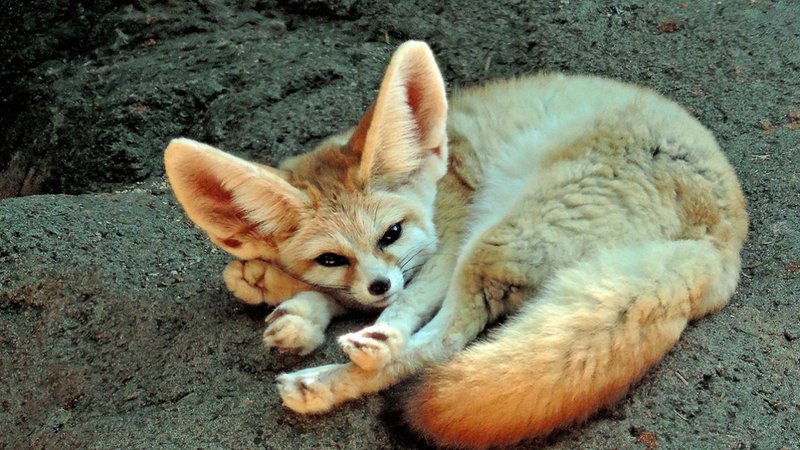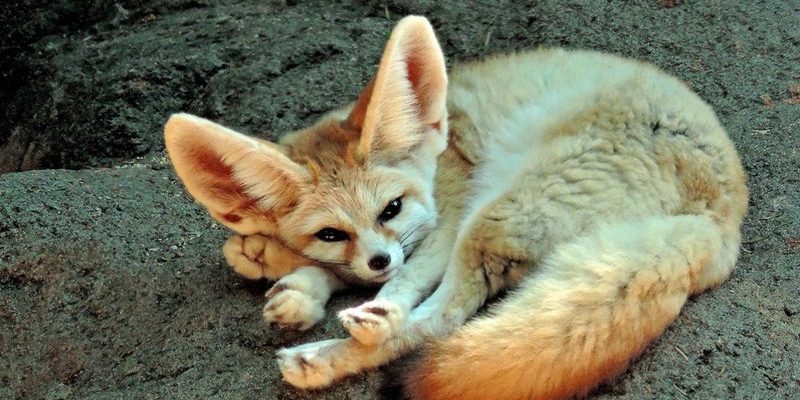
Let’s dive into the fennec fox’s ecosystem role, exploring how these small, clever foxes contribute to the balance of their habitat. Think of it like uncovering how all the parts of a watch fit together, helping us appreciate the bigger picture. We’ll explore everything from their diet to their interactions with other species, shedding light on why they matter so much in their arid world.
Understanding the Fennec Fox
The fennec fox, known for its strikingly large ears and petite size, is the smallest of all canids. Native to the sandy deserts of North Africa, these foxes have a few unique adaptations that help them thrive in extreme conditions. Their ears, which can be up to six inches long, aren’t just for show; they help dissipate heat and enhance their ability to hear prey underground. Imagine wearing giant headphones just to catch the faintest sounds!
These foxes typically weigh between 2 to 3.5 pounds and measure around 24 inches long. They’re nocturnal, which means they’re most active at night. This helps them avoid the scorching daytime temperatures, a savvy survival strategy. You’ll often find fennec foxes digging burrows in the sand to escape the heat and create a cozy home for their families.
The Fennec Fox’s Diet and Role as a Predator
Now, let’s chat about what these little guys eat. Fennec foxes are omnivores, which means they enjoy a varied diet that helps keep the ecosystem balanced. They primarily feast on small insects, rodents, lizards, and even fruits and plants! By hunting these smaller creatures, they play a crucial role as predators, helping to control populations of those species.
Think of it this way: if too many insects or rodents were around, they could overconsume the plants in their habitat. This could lead to desertification, where the land becomes barren and uninhabitable. So, by keeping these numbers in check, fennec foxes help maintain a healthy environment for themselves and other desert species.
Fennec Foxes and Their Prey
You might be wondering, how do fennec foxes catch their meals? These clever foxes are masters of hunting. They rely on their keen sense of hearing to locate prey hiding beneath the sand. Once they pinpoint the sounds, they quickly dig with their strong front paws to uncover their meal.
Their hunting technique not only highlights their adaptability but also influences the behavior of their prey. For instance, with fennec foxes around, rodents and insects become more cautious, ensuring that they don’t overpopulate and destabilize the ecosystem. It’s a delicate balance—one predator keeping many small species in check, which ultimately supports the desert’s biodiversity.
The Fennec Fox’s Role in Seed Dispersal
Beyond being skilled hunters, fennec foxes contribute to their ecosystem in another significant way: seed dispersal. When these foxes munch on fruits, they often leave the seeds behind in their droppings. This process helps plant species spread across the desert landscape.
Consider the analogy of a gardener planting seeds. When fennec foxes eat fruit and then travel to different locations, they effectively “plant” those seeds, giving new plants a chance to grow. This is vital in a harsh environment where plant growth can be challenging. Without these little gardeners, certain plant species might struggle to thrive, further impacting the animals that depend on them for food and shelter.
Interactions with Other Species
Fennec foxes are not just solitary figures in the desert; they interact with various other species, creating a web of relationships that highlight the complexity of their ecosystem. For example, they often share their terrain with rodents, reptiles, and insects. Their role as both predator and seed disperser helps ensure that these species maintain balanced populations.
Additionally, predators like the African wild dog or larger birds might see fennec foxes as prey. This predator-prey dynamic keeps the food chain strong and diverse. When fennec foxes are present, they help support a wider range of wildlife, contributing to a rich and varied ecosystem. It’s fascinating to think about how these tiny creatures influence their environment, isn’t it?
Threats to the Fennec Fox and Their Habitat
As charming as fennec foxes are, they face several threats that can impact their role in the ecosystem. Habitat loss due to urbanization and agriculture is a significant concern. When humans encroach on their territory, fennec foxes lose their homes and hunting grounds. This can lead to population declines, which, in turn, affects the balance of the desert ecosystem.
Moreover, climate change poses a serious threat. As temperatures rise and rainfall patterns change, the delicate balance of the desert ecosystem may be disrupted. Fennec foxes rely on specific habitats, so any changes to their environment can have ripple effects, impacting every other species within that ecosystem.
Conservation Efforts and the Future of Fennec Foxes
Conservation efforts for the fennec fox focus on habitat preservation and awareness campaigns. Organizations are working to protect their natural habitats from urban development while promoting sustainable practices. You might wonder how this benefits us, too—by preserving the fennec fox’s home, we also support the entire ecosystem, which has far-reaching effects on our planet’s health.
Education is key to these conservation efforts. By spreading knowledge about the importance of fennec foxes, we can inspire more people to take action to protect them. Whether it’s through donations, volunteering, or simply sharing information, every bit helps ensure these adorable creatures can continue thriving in their unique habitats.
In conclusion, the fennec fox plays a vital role in its ecosystem as a predator, seed disperser, and a connection to the larger web of life in the desert. Understanding their role not only helps us appreciate these fascinating animals more but also highlights the importance of conservation efforts. By protecting fennec foxes, we’re investing in the health of the entire desert ecosystem, ensuring that it remains vibrant and balanced for generations to come.

